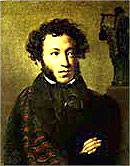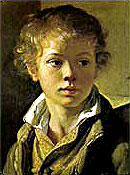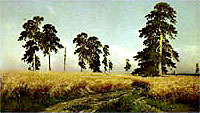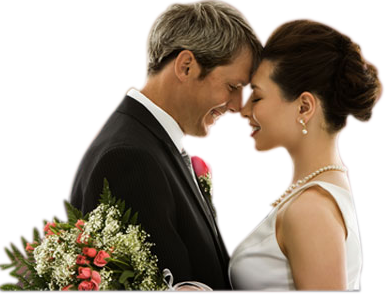The Tretyakov Gallery
 |
| by Orest Kiprensky. Portrait of Alexander Pushkin |
The collector's brother, Sergei Tretyakov, was also a connoisseur of art who collected pictures not only by Russian, but also by French and Dutch painters. The Tretyzakov brothers' mansion in Lavrushinsky Lane had to be expanded in 1872 to accommodate the two collections. Subsequently, rebuilding had to be undertaken five times. Six more rooms had to be added in 1882 to accommodate the vast Turkestan series of paintings by Vasily Vereshchagin. The modern facade of the Gallery was added to the Tretyakov's mansion in 1902 from a design by Victor Vasnetsov.
The collection of Pavel and Sergei Tretyakov was opened to the public in I874 as a private museum and rapidly became very popular.
In 1892 Pavel Tretyakov presented his collection, by that time already famous, to the city of Moscow.
 |
| by Vasily Tropinin. Portrait of the Artist's Son |
Also, in the Department of Russian Icons, one can see the famous Old Testament Trinity, the only work authentically attributed to Andrei Rubliov. Its subject is borrowed from the Old Testament story of the appearance of God to Abraham and Sarah in the image of three travel weary angels who asked for shelter. Rubliov depicted the three angels as an embodiment of the concept of spirituality.
The Old Testament Trinity was considered to be the main icon of the TrinitySergius Monastery at Zagorsk;
 |
| by Ivan Shishkin. The Corn |
In 1912, the museum was opened to the public. Now Moscow had a comprehensive collection of copies of ancient Greek, Roman, medieval and Renaissance masterpieces, including electroplate copies of some of the best-known silverware antiquities. In addition to that, the museum found itself in possession of a remarkable co11ection of Egyptian antiquities and several 13th and 14th century Italian paintings.
The Museum of Fine Arts functioned as an educational center under the auspices of Moscow University until 1923, when it was handed over to Narkompros (The People's Commissariat of Education) as a national museum. The new status required essential changes in the structure and work of the museum.
In the early twenties, the museum already housed a substantial collection of paintings. These at first included Dutch and French paintings from the Tretyakov Art Gallery collection as well as French and Flemish paintings and several Rembrandts from the collection of the abolished Rumiantsev Museum.
Gradually the Museum of Fine Arts, from a collection of replicas, turned into a repository of original artistic masterpieces. It was named after Pushkin in 1937 (the centenary of the poet's death).
In 1948, the museum collection grew again, to include the late 19th and early 20th century French paintings and French sculptures of the same period from the abolished Museum of Modern Western Art. This provided a link with modern art.

|
|
Copyright © 1995-2025 |

